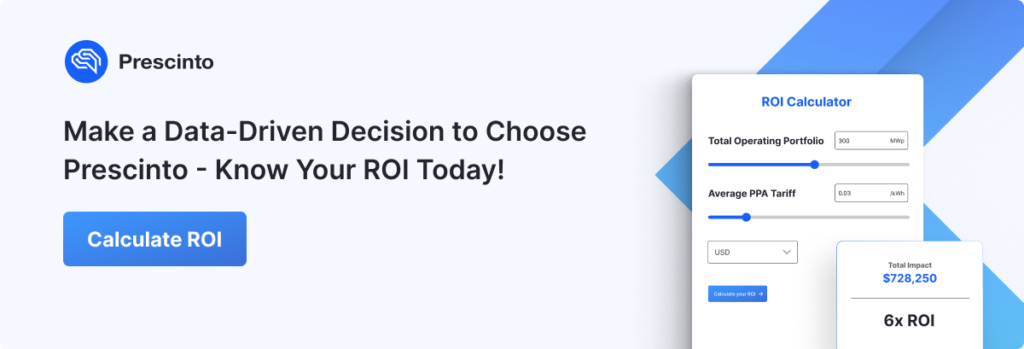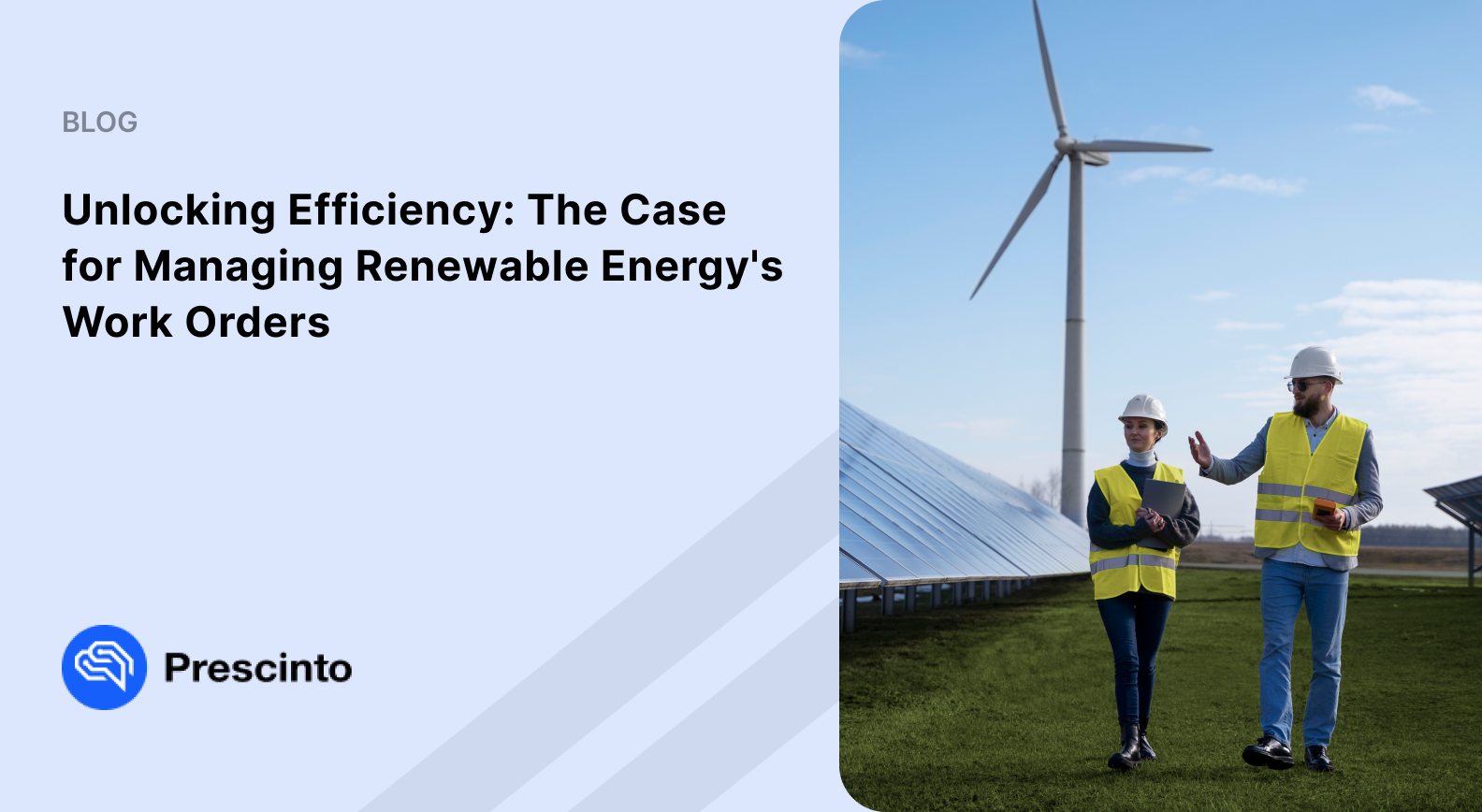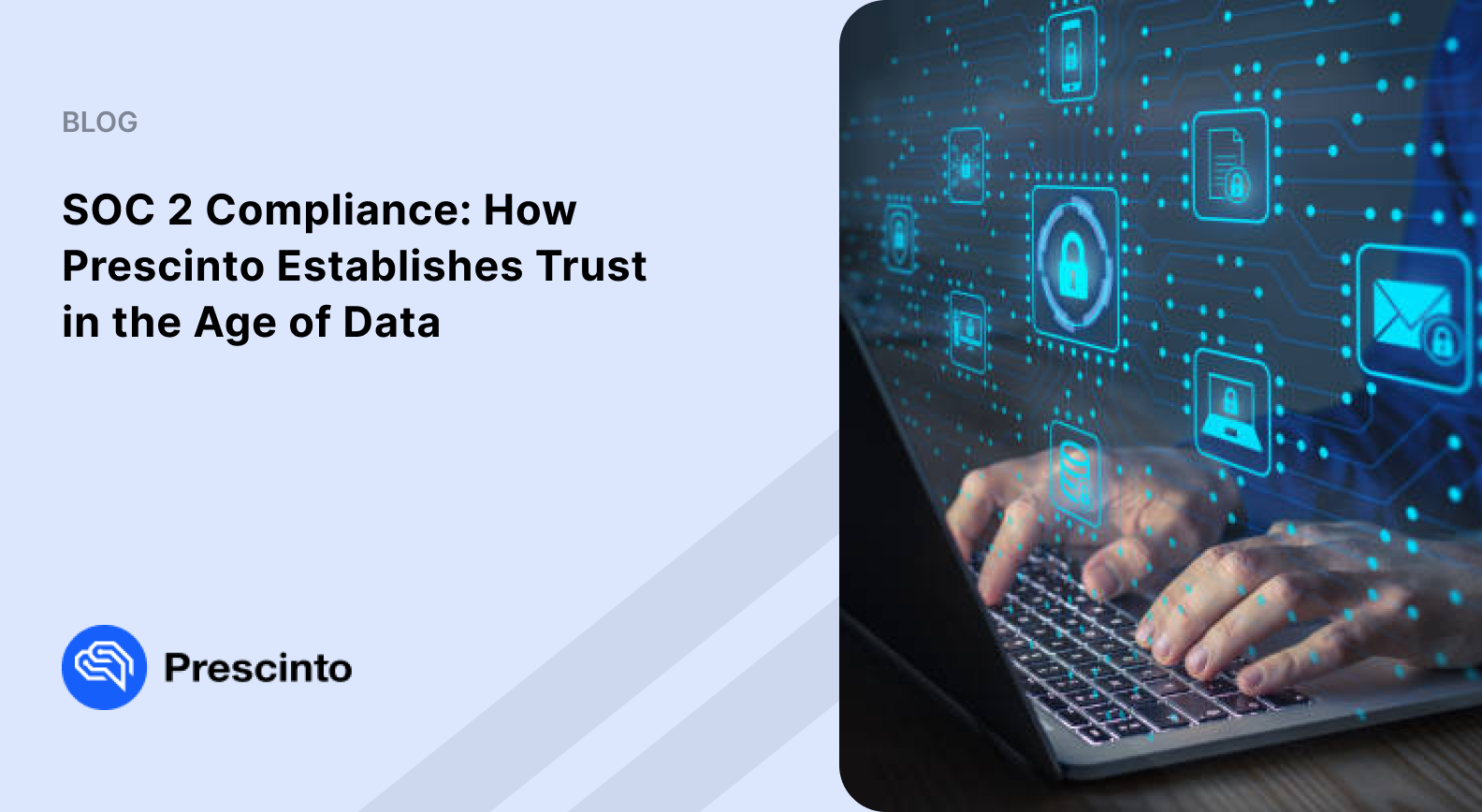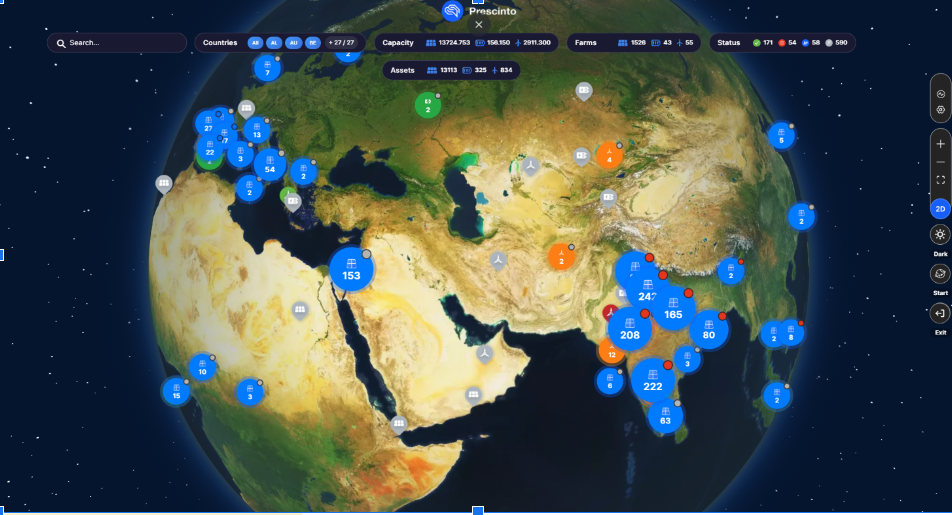Strategies to Mitigate Solar Panel Degradation and Boost Efficiency
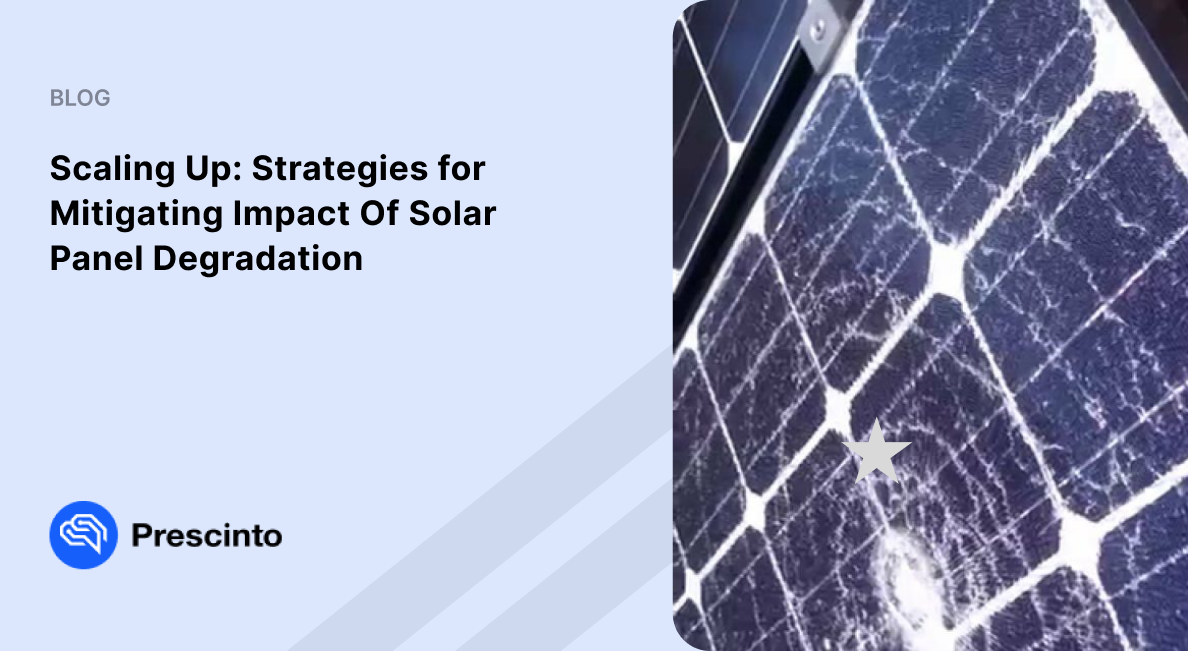
- February 2, 2024
- Prescinto
For solar asset owners, the conversation is not just limited to more panels soaking up the sun, but also about strategies to optimize every bit for the long haul. However, the effectiveness and longevity of solar panels are influenced by various factors, including the inevitable process of solar panel degradation.
What is Solar Panel Degradation?
Solar panel degradation refers to the gradual decrease in the efficiency and performance of solar photovoltaic (PV) panels over time. It is a natural and expected process that occurs as a result of various environmental, operational, and material factors.
Solar panels are designed to convert sunlight into electricity through the photovoltaic effect, but over the years, their ability to generate power may diminish. This degradation, if left unchecked, can impact the overall performance and energy output of solar installations.
Based on research conducted by the National Renewable Energy Laboratory (NREL), the average degradation rate for solar panels stands at 0.50%. In practical terms, this implies that even after 25 years of operation, you can anticipate your solar output to be approximately 89% of its initial capacity.
The Ultimate Guide to Choosing Your Solar APM Tech Partner (Free Complete Checklist) –
Download Now
What are the Key Factors Leading to Solar Panel Degradation?
Several factors contribute to the degradation of solar panels over time. Understanding these key factors is essential for addressing and mitigating potential issues. Here are the primary factors leading to solar panel degradation and impacting solar panel efficiency:
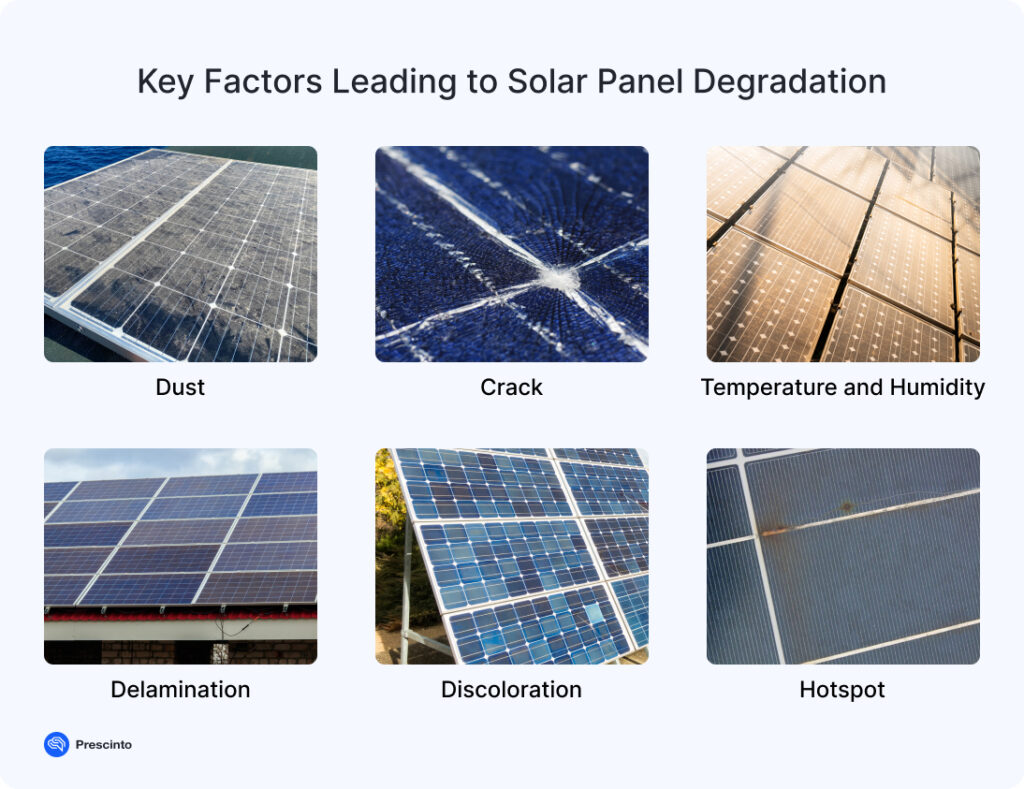
Exposure to UV Radiation
Solar PV panels are continuously exposed to ultraviolet (UV) radiation from sunlight. Over time, prolonged exposure can lead to the breakdown of materials, affecting the efficiency of solar cells.
Temperature Variations
Fluctuations in temperature, especially exposure to high temperatures, can contribute to thermal stress on solar panels. This stress may lead to the expansion and contraction of materials, causing microcracks and reducing overall efficiency.
Humidity and Moisture
Moisture infiltration over an extended period can cause corrosion and delamination of solar cell components. This degradation is particularly relevant in regions with high humidity levels or where the solar panels are exposed to frequent rain.
Mechanical Stress
Solar panels are susceptible to physical damage from mechanical stress, including hail impacts, heavy snow loads, or wind-induced vibrations. Such stress can result in cracks or breakages in the photovoltaic cells, leading to reduced efficiency. Solar cells, also known as wafers, are extremely brittle and can break even from a 5 ft height drop.
Dust and Dirt Accumulation
The accumulation of dust, dirt, and other particles on the surface of solar panels can obstruct sunlight absorption. This reduces the amount of light reaching the photovoltaic cells, impacting energy conversion efficiency. Dust and shadows are often overlooked but can have a significant impact on solar panel performance.
Photovoltaic technology converts light into electricity. When dust or shadows block light from reaching specific areas of a panel, it creates resistance. This resistance prevents the flow of electricity through the shaded cells, reducing power generation in the short term. Over time, the shaded cells can heat up, leading to hotspot issues. If left unchecked, these hotspots can cause bypass diode problems, ultimately degrading the entire module. It’s important to note that a panel installed in the shadow may void its warranty.
Chemical Exposure
Exposure to harsh chemicals or pollutants, such as industrial emissions or bird droppings, can lead to chemical reactions that compromise the integrity of solar panel materials. When cleaning solar panels, it’s crucial to use approved cleaning agents and brushes to avoid damaging the panel and voiding the warranty. Some surfactants can harm the panel, so it’s important to follow the manufacturer’s guidelines for cleaning.
Potential Induced Degradation (PID)
Potential-induced degradation occurs when voltage potential between the solar cells and the ground leads to a flow of current, causing degradation. PID is a common issue in certain environmental conditions and can be addressed through appropriate system design and mitigation measures.
Spectral Mismatch
Spectral mismatch refers to variations in the sunlight spectrum compared to the ideal spectrum for which solar cells are designed. Changes in sunlight conditions can lead to reduced efficiency as cells may not perform optimally across all wavelengths.
Manufacturing Defects
In some cases, defects in manufacturing, such as poor soldering, suboptimal encapsulation, or inconsistent material quality, can contribute to premature degradation of solar panels. In such instances, the warranty can be claimed to have the panels replaced.
Light-Induced Degradation (LID)
LID occurs during the initial exposure of solar cells to sunlight and can result in an immediate decrease in efficiency. However, modern solar cell technologies, such as anti-LID coatings, aim to minimize this effect.
What is the Impact of Solar Panel Degradation?
The impact of solar panel degradation can be significant and may affect various aspects. It may impact the solar PV potential drastically, ultimately influencing the bottom line of solar energy projects and investments. Here are key considerations regarding the impact of solar panel degradation:
Reduced Energy Output
As solar panels degrade, their ability to convert sunlight into electricity diminishes. This reduction in efficiency leads to a decrease in the overall energy output of the solar installation. Lower energy production can impact the project’s ability to meet performance expectations and generate the anticipated revenue.
Decreased Return on Investment (ROI)
Solar energy projects are often assessed based on their return on investment. If solar panels degrade more rapidly than expected, the project’s ROI may be lower than initially projected. This can affect the financial viability of the project and impact the profitability of the investment.
Increased Operating Costs
Solar panel degradation may necessitate more frequent maintenance and repairs. Increased operating costs associated with addressing degradation-related issues, such as replacing faulty panels or cleaning to mitigate efficiency losses, can impact the overall project budget.
Shortened System Lifespan
The degradation of solar panels can contribute to a shortened lifespan of the entire solar energy system. Premature equipment failure or the need for early replacements can result in additional capital expenditures, affecting the long-term financial performance of the project.
Contractual and Performance Guarantees
Many solar panel manufacturers and installers provide warranties and performance guarantees. If degradation exceeds the specified limits outlined in these agreements, it may trigger warranty claims and additional costs for replacement or repair. Meeting performance guarantees is crucial for maintaining investor confidence.
Impact on Power Purchase Agreements (PPAs)
Solar projects often rely on Power Purchase Agreements (PPAs) that define the terms of energy sales. Degradation-induced decreases in energy output may lead to non-compliance with agreed-upon energy production levels. This potentially results in penalties or renegotiations that can impact revenue streams.
How Prescinto Helps Curb the Impact of Solar Panel Degradation and Boost Solar PV Efficiency
Prescinto’s advanced solar Asset Performance Management (APM) platform powered by cutting-edge technologies, including Artificial Intelligence (AI), Machine Learning (ML), advanced data analytics, and efficient automation, offers a holistic and proactive approach to mitigate the impacts of solar PV panel degradation. Prescinto goes all the way from solar loss identification to data-driven action recommendation and work order management.
Combine the Power of Drone Analytics and String Analytics
Prescinto’s unique integration of drone analytics with string analysis sets it apart from traditional drone analytics, which often only detect anomalies without quantifying estimated losses. Prescinto is the only vendor offering this exceptional capability, allowing for the precise quantification of estimated losses resulting from defects.
With solar plants spanning multiple acres, data quality can be challenging, with approximately 30% of data exhibiting poor quality. Prescinto’s string analysis addresses this issue by utilizing a machine learning algorithm to filter out irrelevant data before conducting an analysis. This approach incorporates both electrical data, such as string current, and environmental data, including plane of array (POA) irradiance and module temperature, to assess string performance.
Drone thermography complements string analysis by capturing infrared (IR) thermal images of the panels, enabling the detection of issues such as hotspots, bypass diode problems, and overall module overheating. The correlation between electrical and thermal data facilitates informed decisions regarding warranty claims or module replacements. It is crucial to note that a single underperforming module within a string can significantly impact the entire string’s performance, leading to significant energy loss. Therefore, timely replacement of degraded modules is highly recommended.
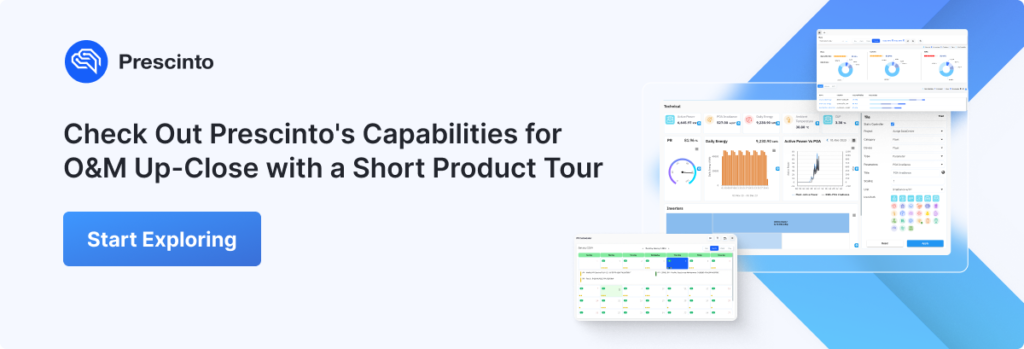
Accurately Classify Your Losses into 14 Loss Buckets with AI
Leveraging AI and ML algorithms, Prescinto goes beyond traditional loss identification methods. These technologies can analyze intricate patterns in performance data to pinpoint subtle inefficiencies and potential degradation sources. Prescinto’s AI-Powered Recommendation Engine, Tahoe, plays a crucial role by classifying losses into 14 types, providing a granular understanding of inefficiencies, and enabling a targeted preventative maintenance approach. Through visualizing data trends with comprehensive charting tools, stakeholders can conduct in-depth analyses, identifying degradation patterns and optimizing performance. The enhanced accuracy in identifying losses ensures a meticulous approach to preventative maintenance, addressing even the most nuanced issues affecting solar panel efficiency.
Advanced solar asset performance management solutions incorporate smart loss bucketing to categorize the identified losses based on root causes, severity, and impact. By prioritizing preventative maintenance efforts, asset managers or operations and maintenance service providers can strategically allocate resources. This also ensures that the most critical issues are addressed promptly. This approach minimizes the overall impact of degradation on energy production and project profitability.
The integration of root cause analysis powered by AI allows for a deeper understanding of factors contributing to solar PV panel degradation. Identifying the root causes of inefficiencies enables maintenance teams to implement targeted preventative solutions, addressing underlying issues rather than merely mitigating symptoms. This approach fosters sustained performance improvements over the long term.
Work Order Automation and CMMS
Custom alerts, configured with specific thresholds and escalations, facilitate timely interventions, minimizing the impact of degradation on energy production. By automating work orders based on these alerts, Prescinto ensures that maintenance teams swiftly address identified issues, contributing to the extended lifespan of solar panels. Ultimately, this comprehensive approach not only safeguards against degradation-related losses but also enhances operational efficiency. This reduces costs and maximizes the bottom line for solar plants.
Advanced APM, complemented by work order automation and a comprehensive Computerized Maintenance Management System (CMMS) software, streamlines the preventative maintenance workflow. Automated creation and management of work orders facilitate efficient interventions, ensuring that potential issues are addressed in a timely manner. Prescinto’s CMMS further enhances asset management by providing a centralized platform for scheduling, tracking, and documenting maintenance activities.
Work order automation, coupled with intelligent prioritization, based on the criticality of identified issues, optimizes preventative maintenance. Thus, Prescinto ensures that maintenance teams focus on addressing the most impactful problems first, improving resource utilization, and minimizing downtime.
Enhanced Data-Driven Decision-Making
Prescinto emerges as a pivotal solution for mitigating solar PV panel degradation enhancing the overall lifespan of panels, thereby contributing to improved bottom lines for solar plants. With custom reports and dashboards for tracking tailored KPIs and metrics, users gain real-time insights into the performance of solar assets.
Advanced data analytics and AI contribute to enhanced data-driven decision-making by providing deeper insights into performance trends, efficiency improvements, and the overall health of solar power plants. With 360-degree visibility into plant operations and performance, stakeholders can make informed decisions aligned with long-term sustainability goals, ensuring a proactive and strategic approach to preventative maintenance. Thus, Prescinto goes beyond traditional monitoring with its AI-powered actionable recommendations This empowers users to make informed decisions to proactively address degradation factors and boost solar panel efficiency.
- Topics: Solar
About Author

